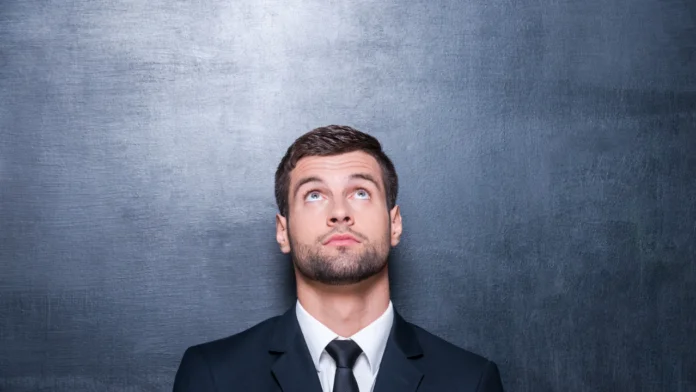Hypersomnolence, commonly known as excessive daytime sleepiness (EDS), is an overwhelming and persistent daytime sleepiness. Hypersomnolence sufferers have trouble staying awake and may be overtired despite getting enough sleep. This disorder can impair daily life. A psychiatrist can best guide regarding hypersomnolance
Hypersomnolence basics:
Causes: Narcolepsy, sleep apnea, and restless legs syndrome can cause hypersomnolence. Depression, hypothyroidism, and neurological problems can cause daytime sleepiness. Idiopathic hypersomnolence can occur.
Hypersomnolence is characterised by daytime tiredness that is not eased by sleep. Hypersomnolence can include daytime sleepiness, memory loss, difficulty concentrating, and a strong urge to snooze.
Diagnosis: Medical history, sleep habits, and symptoms are examined to diagnose hypersomnolence. Polysomnograms can rule out other sleep disorders. Another diagnostic tool, the Multiple Sleep Latency Test (MSLT), measures the time it takes to fall asleep in a quiet environment during the day.
The cause determines hypersomnolence treatment. Maintaining a regular sleep schedule, avoiding stimulants before bed, and having a good sleep environment may benefit some people. CPAP for sleep apnea or narcolepsy medication may be suggested for underlying sleep disorders.
Lifestyle changes can help manage hypersomnolence. These include regular exercise, a consistent sleep schedule, proper sleep hygiene, and avoiding alcohol and sedatives, which can interrupt sleep.
If you suspect hypersomnolence or excessive daytime sleepiness, see a doctor or sleep specialist who can assess your symptoms, do tests, and offer therapy.
What distinguishes narcolepsy from hypersomnolence?
Narcolepsy and hypersomnolence (extreme daytime sleepiness) are two sleep disorders with similar symptoms but different origins. Key differences between narcolepsy and hypersomnolence:
The brain’s failure to control sleep-wake cycles causes narcolepsy. Hypocretin (orexin) insufficiency typically causes it. Hypersomnolence can be induced by sleep disorders, medical illnesses, drugs, or even be idiopathic.
Symptoms: Both narcolepsy and hypersomnolence cause excessive daytime sleepiness, but narcolepsy often has additional symptoms.
Cataplexy: Sudden muscle weakness caused by powerful emotions.
Sleep paralysis: Brief incapacity to move or speak during sleeping or waking up.
Hypnagogic hallucinations: vivid, disturbing hallucinations when going asleep or waking up.
Fragmented nightly sleep: Narcolepsy can cause nighttime awakenings.
Sleep Attacks: People with narcolepsy may have uncontrollable sleep attacks, falling asleep in inappropriate or dangerous conditions. Hypersomnolence rarely causes sleep attacks
Hypersomnolence can develop at any age, but narcolepsy usually starts in adolescence or young adulthood. Narcolepsy lasts a lifetime, although hypersomnolence may be transitory or permanent depending on the cause.
Treatment: Narcolepsy and hypersomnolence treatments overlap, but narcolepsy drugs are more successful. Narcolepsy is treated with stimulants, SSRIs, and sodium oxybate. Addressing the aetiology, increasing sleep hygiene, and lifestyle changes may treat hypersomnolence.
If you suspect narcolepsy or hypersomnolence, see a doctor or sleep specialist for a diagnosis and treatment. Your symptoms, medical history, and tests will help them diagnose and treat you.
Diagnose hypersomnolence disorder?
A sleep specialist or doctor must assess and treat hypersomnolence disorder. He
Steps typically include:
Medical History: The doctor will discuss your sleep history, medical issues, medications, and sleep patterns. They may ask about your daily routine, lifestyle, and sleepy triggers.
Physical Exam: A physical exam may be done to rule out any medical issues that may be causing excessive sleepiness.
Sleep journal: A two-week sleep journal can reveal your sleep patterns, quality, and daily tiredness. This includes charting your bedtime, waketime, and daytime naps.
Epworth drowsiness Scale (ESS): Your doctor may ask you to fill out the ESS, which measures daytime drowsiness. It entails rating your likelihood of falling asleep in common settings.
Sleep Study: A polysomnogram can monitor your sleep patterns overnight. This test analyses sleep-related brain, eye, muscle, heart, and breathing activity. It detects sleep abnormalities like sleep apnea and restless legs syndrome that cause daytime tiredness.
After an overnight sleep study, the MSLT is a daytime sleep study. It measures how quickly you fall asleep and reach REM sleep during numerous short naps. The MSLT evaluates daytime sleepiness and identifies sleep disorders like narcolepsy.
The healthcare practitioner can diagnose hypersomnolence disorder or another sleep problem or medical condition by analyzing these exams. After diagnosis, therapy options can be addressed to improve symptoms and quality of life.
Conclusion
Hypersomnolence (EDS) is characterized by excessive daytime sleepiness. It can impair daily life. Narcolepsy and hypersomnolence both cause daytime sleepiness, although they differ.
The brain’s failure to control sleep-wake cycles causes narcolepsy. Cataplexy, sleep paralysis, hypnagogic hallucinations, and disrupted nighttime sleep are common. Narcolepsy starts in youth or young adulthood and requires lifetime care.
Sleep problems, medical diseases, drugs, and idiopathic factors can induce hypersomnolence. It causes daytime sleepiness without cataplexy or sleep paralysis. Hypersomnolence can start at any age, and its length depends on the cause.
A medical history assessment, physical examination, sleep diary analysis, and maybe polysomnogram and multiple sleep latency test (MSLT) are needed to diagnose hypersomnolence disorder. These tests establish excessive daytime sleepiness, rule out other sleep disorders, and identify possible reasons.
The reason determines hypersomnolence condition treatment. It may involve lifestyle changes, sleep hygiene improvements, treating underlying sleep disorders or medical illnesses, and medication management.
If you suspect hypersomnolence or excessive daytime sleepiness, see a doctor or sleep expert for a diagnosis and treatment. They can help you diagnose and make personalised recommendations.

